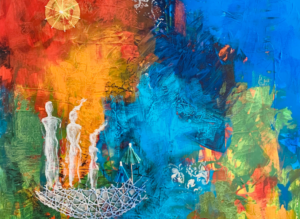Kida*: An ongoing research of the intersection between the city and the body
Published Jan 18, 2023

Kida*
*bow/salutation
The bowing figure in these works draws inspiration from my meditation and spiritual practices. Beginning with photographs taken around my neighborhood in south Tel Aviv and then planting the bowing figure in them, I merge my inner world with daily reality in the etchings. The video was then created as an echo or answer to these works, bringing the two-dimensional figure to life and embodying what often feels like an impossible combination. Between the video, etchings, and photographs, this content, stemming from my practice in the last two years, encompasses the meeting points between my spiritual journey and daily reality specifically in my neighborhood in Tel Aviv.
I’m fascinated by the repetitive patterns and often invisible logic of human movement in cities. Whether it’s a religious ritual, gallery hopping, or the way buyers move through the market, I dissect these actions, research the mechanism, and extract what I see as holding beauty. Inspired by the aesthetic features of the place or people I’m engaging with my installations and performances are an outcome of the relations between community, object, and place. I see myself as a relationship choreographer and storyteller tempting the body to linger in the unknown and the eyes to see the familiar in a new light. Through my art, I create conversations across disciplines and cultures, meeting points that allow moments of compassion and humor.
The journey to find meaning, direction, softness, and beauty within our turbulent times and fast lives is essential. By sharing my work and process, I hope to inspire others to give space and time to their own rituals and to bring attention to the way they might be connected with locality and tradition.
Parts of this work, as well as others, were in a group exhibition at Azrieli Gallery in Jerusalem beginning June 1, 2022.
About Kida in Zen Buddhism and in Jewish tradition:
In zen practice, bowing is the starting and ending point. It’s the first motion when entering a sacred space and the last one before leaving. Bowing towards your community or to the wall. The person bowing does so towards the world and all in it and inwards, towards oneself and all she is. The bowing itself – forms, measure, and length is affected by cultural and historic surroundings, but the beating heart of it is a deep respect and appreciation that holds within them something of a yearning or a wish. In short – a motion of wonder.
In Jewish tradition, the bow has three different words, each relating to a different body posture with meanings that are different from the contemporary ones:
כריעה, השתחוויה, קידה
Kria, Hishtachavaya, Kida
The first – Kria כריעה or Lichroa לכרוע (verb) is shins on the floor with a straight back.
The second Hishtachavaya or Lehishtachavot (verb) להשתחוות, is the whole body laid on the ground
Kida is a posture in between – shins on the ground, hands on the ground, and the forehead touching the ground too. All these are variations of expressions of surrender and gratitude. In the scriptures (סוכה נג) it’s said that this can not be done by anyone and commentators talk about this movement being of such deep gratitude and surrender that it’s almost considered an act of vanity to do so.
Nowadays, this type of bowing is done only once a year on Yom Kippur.
וכשהוא משתחוה נועץ שני גודליו בארץ ושוחה, ונושק את הרצפה וזוקף, ואין כל בריה יכולה לעשות כן. וזו היא קידה. (סוכה נג.).
ומבאר שם רש”י-
“וזו קידה – האמורה בכתובים, דאמר מר: קידה על אפים, אין לו להשתטח להגיע לארץ גופו אלא פניו בלבד, מי שיודע ויכול לעשות כן, ובדורו של רבן שמעון לא היה אחד מעומדי עזרה יכול לעשות כן, אלא הוא” (סוכה נג.).
Kida* - Tell me who you are without your head. (Etching 1)
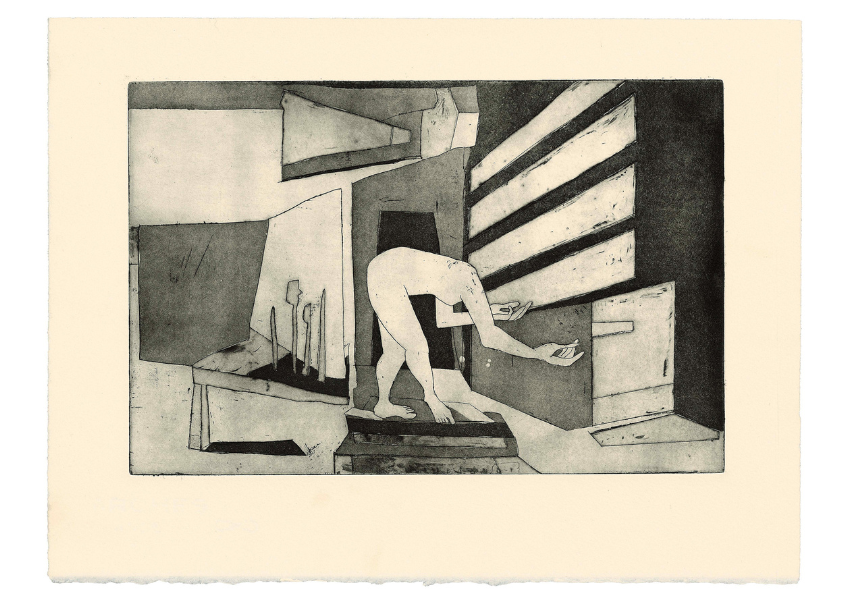
Kida* - Tell me who you are without your head. (Etching 2)
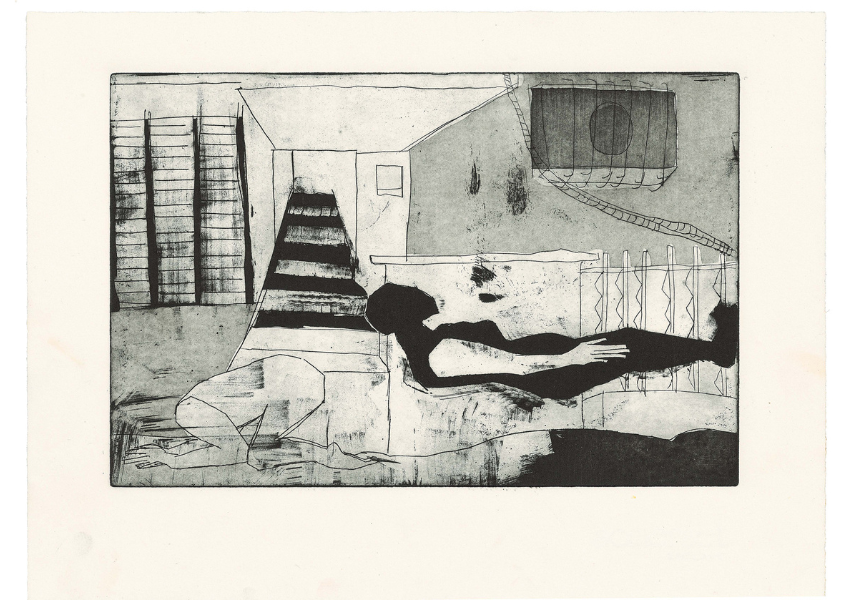
Kida* - Tell me who you are without your head. (Etching 3)

Kida* - Tell me who you are without your head. (Etching 4)

Kida* - Documenting thresholds and entrances in HaTikva Neighborhood, Tel Aviv. Ongoing.
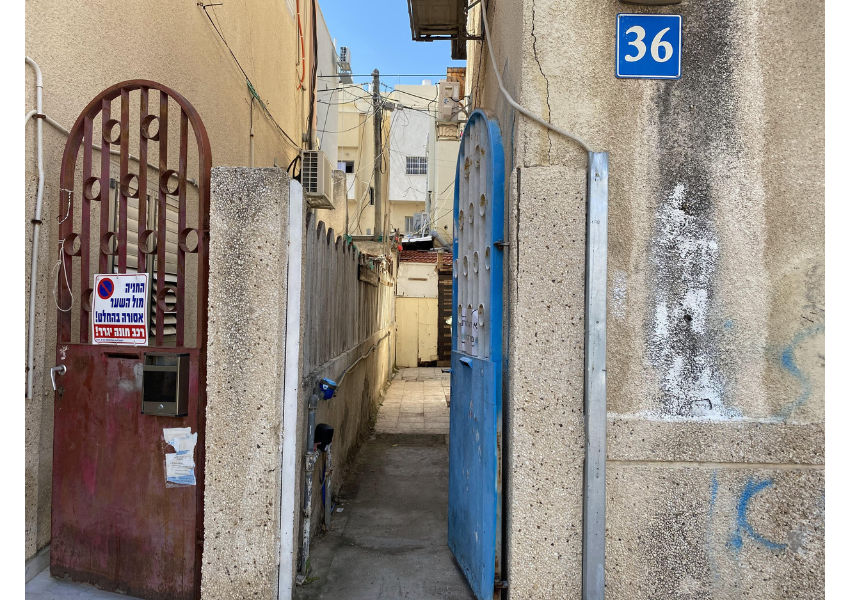
Kida* - Documenting thresholds and entrances in HaTikva Neighborhood, Tel Aviv. Ongoing.

Kida* - Documenting thresholds and entrances in HaTikva Neighborhood, Tel Aviv. Ongoing.

Kida* - Documenting thresholds and entrances in HaTikva Neighborhood, Tel Aviv. Ongoing.
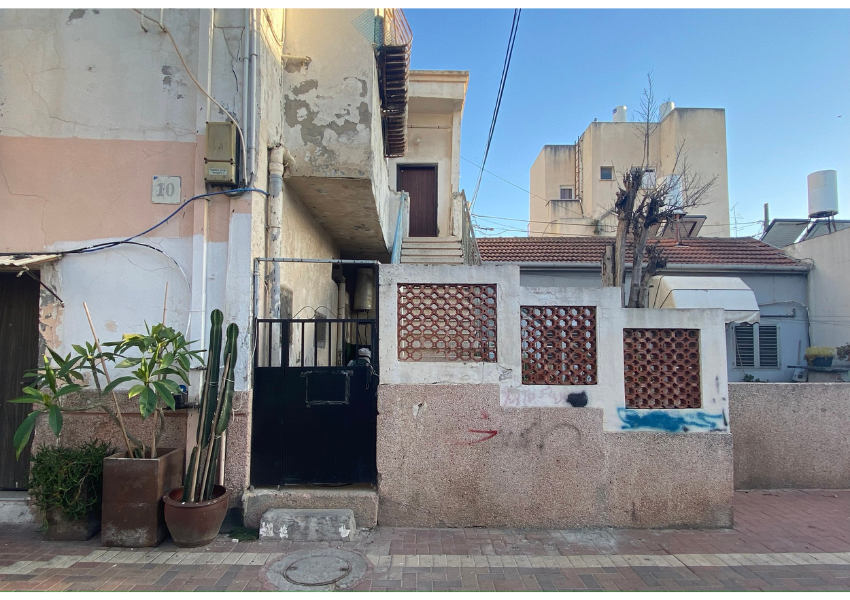
Shirel Horovitz is an interdisciplinary artist creating installations and performances engaging in the dynamics between the human body and the city.
Reflections
What videos and photos feel similar to your environment and what is different from them?
What are the things (colors, shapes, objects) that grab your attention in your own surroundings?
Can you note the differences between you as you are at home and outside? (the way you carry your body, your mindset, wordings, etc)
Do you have any rituals marking transitions in your daily life (ie. coffee or tea, phone call, meditation, a special kind of food)?
Want more?
Get curated JewishArts.org content in your inbox


